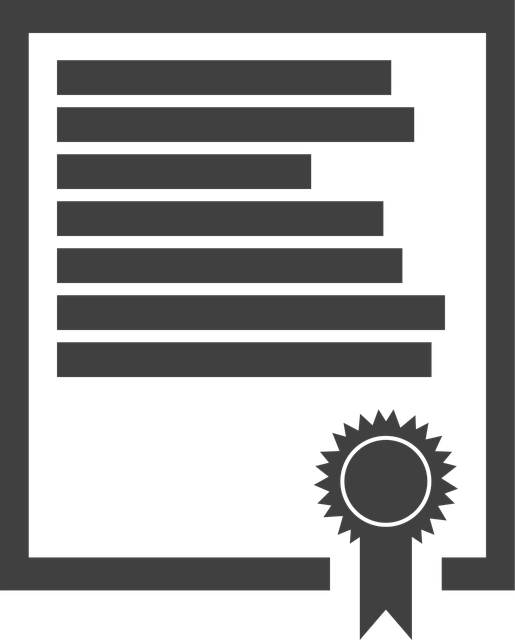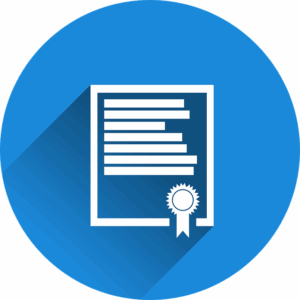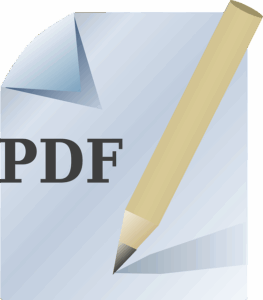Certified Translations: Global Education Standards for Universities
Translating University Regulations and Policies globally requires specialized translators with academic expertise, cultural sensitivity, and legal knowledge to ensure precise, culturally appropriate, and legally binding translations. Digital tools li…….

Translating University Regulations and Policies globally requires specialized translators with academic expertise, cultural sensitivity, and legal knowledge to ensure precise, culturally appropriate, and legally binding translations. Digital tools like machine translation (MT) and artificial intelligence (AI) enhance efficiency, while strict confidentiality agreements protect data. Partnerships with reputable translation services improve student satisfaction, balancing accuracy with ethical considerations for a diverse international audience.
In today’s globalized educational landscape, the precise translation of university regulations and policies is paramount for international student mobility and academic cooperation. This article explores certified translation as a vital tool for navigating complex cross-border educational requirements. We delve into critical aspects such as understanding global standards, ensuring accuracy in regulatory text, and the evolving role of technology. Through case studies and future trends, we illuminate best practices for successfully implementing university regulations on an international scale.
- Understanding Global Education Standards for Translations
- The Role of Certification in University Document Transfer
- Ensuring Accuracy: Challenges in Translating Regulatory Text
- Best Practices for Localizing Academic Policies Internationally
- Legal and Ethical Considerations in Cross-Border Translation
- Technological Advancements in Certified University Translation
- Case Studies: Successful Global Implementation of University Regulations
- Future Trends: Adapting to Changing Requirements for Educational Translations
Understanding Global Education Standards for Translations
In today’s globalized educational landscape, the seamless transfer of university regulations and policies across borders is paramount. Understanding global education standards for translations ensures that academic institutions maintain consistency and compliance when communicating with international students, faculty, and partners. This involves more than just linguistic proficiency; it requires a deep grasp of cultural nuances and educational frameworks prevalent worldwide.
For instance, what constitutes a comprehensive university policy in one country might differ significantly from another. Therefore, professional translators engaged in this task must stay updated on international education guidelines, such as those set by global organizations or regional bodies, to accurately convey the intended meaning and purpose of University Regulations and Policies in their target languages.
The Role of Certification in University Document Transfer
The certified translation of university regulations and policies plays a pivotal role in facilitating seamless communication across borders, ensuring that international students, faculty, and staff understand the rules and guidelines governing their academic journey. Certification adds an extra layer of credibility and precision to the translation process, which is paramount when dealing with legal and administrative documents. It guarantees that the translated text is accurate, culturally appropriate, and legally binding, thereby streamlining the transfer of university regulations and policies for global audiences.
This process involves specialized translators who are not only fluent in multiple languages but also possess a deep understanding of academic terminology and cultural nuances. They meticulously translate, revise, and certify the documents to meet international standards, ensuring that all University Regulations and Policies remain intact and accessible in their target languages. This meticulous approach is essential to maintaining the integrity of the original content while adapting it for diverse linguistic landscapes.
Ensuring Accuracy: Challenges in Translating Regulatory Text
When translating university regulations and policies for a global audience, ensuring accuracy is paramount. The challenge lies in capturing the precise meaning and intent of the original text while adapting it to different cultural contexts and language nuances. University regulations often contain complex terminology and legal jargon that require expert knowledge to translate accurately. Misinterpretations can lead to confusion, compliance issues, or even legal complications for international students and faculty.
Professional translators must be adept at navigating these complexities, understanding the underlying structures of both the source and target languages. They should also possess domain expertise in academic administration to grasp the specific terminology and ensure consistent interpretation across different policy areas. Quality assurance processes, including peer review and back-translation, further bolster the accuracy of certified translations, ensuring that university regulations and policies are communicated clearly and effectively globally.
Best Practices for Localizing Academic Policies Internationally
When localizing university regulations and policies for an international audience, it’s crucial to adopt best practices that ensure clarity and cultural relevance. One key aspect is to involve native speakers from the target countries in the translation process. This not only guarantees linguistic accuracy but also ensures that cultural nuances are appropriately interpreted and reflected in the translated documents.
Additionally, it’s essential to adapt the content to meet the specific legal and educational requirements of each country or region. This may involve consulting with local experts to ensure compliance and avoid potential pitfalls. Using industry-standard translation memory tools can also enhance consistency across translations, making it easier to update policies as they change over time.
Legal and Ethical Considerations in Cross-Border Translation
The certified translation of university regulations and policies for global use comes with a unique set of legal and ethical considerations. When dealing with such sensitive documents, accuracy is paramount to avoid misinterpretation that could have significant implications. Every word must be meticulously translated, preserving the original meaning and intent while adhering to local legal frameworks.
Ethical responsibilities extend beyond linguistic precision. Translators must ensure cultural nuances are respected to prevent potential offenses or misunderstandings. Confidentiality is also crucial, as university policies often contain sensitive information. Strict confidentiality agreements and secure handling procedures are essential to safeguard personal data and intellectual property rights.
Technological Advancements in Certified University Translation
The digital transformation has brought about significant advancements in the field of university translation, revolutionizing how University Regulations and Policies are handled globally. Modern tools and platforms now enable translators to access vast databases, ensuring consistency and accuracy across multiple languages. Machine translation (MT) systems have emerged as a game-changer, offering rapid initial drafts that human translators can then refine, saving time and resources.
Moreover, artificial intelligence (AI) is increasingly being leveraged to streamline the revision process, identify potential errors, and even suggest improvements based on linguistic patterns. These technological innovations not only enhance efficiency but also guarantee precision in conveying complex academic concepts, making it easier for international students and faculty to navigate university guidelines.
Case Studies: Successful Global Implementation of University Regulations
In the rapidly globalizing academic landscape, the effective implementation of university regulations and policies across borders is paramount to ensure consistency and fairness in student experiences worldwide. Case studies of successful global implementations highlight several key strategies. For instance, top-tier universities have partnered with reputable translation services to certify that their policies are accurately and culturally sensitive translated. This ensures that international students fully comprehend the expectations and requirements placed upon them, fostering a more inclusive environment.
These partnerships often involve rigorous quality control measures, including linguistic experts who verify the accuracy of translations. Moreover, they employ specialized knowledge of academic terminology to maintain the integrity of policy content. Such meticulous approaches have led to positive outcomes, such as improved student satisfaction rates and higher retention numbers among international students, demonstrating the importance of precise and certified university regulations and policies in global use.
Future Trends: Adapting to Changing Requirements for Educational Translations
The landscape of higher education is increasingly globalized, with institutions reaching out to international students and faculty. This trend presents a corresponding challenge: ensuring accurate and culturally appropriate translations of university regulations and policies for non-native speakers. As we move forward, several future trends in educational translations are poised to shape this field.
One notable trend involves the adoption of advanced technologies, such as machine translation (MT) and artificial intelligence (AI), to streamline processes and improve efficiency. While human translators will remain indispensable for their expertise and cultural sensitivity, these tools can handle initial drafts, enabling professionals to focus on refinement and quality assurance. Additionally, there’s a growing demand for specialized translation services tailored to specific academic disciplines, reflecting the intricate nature of university regulations and policies that require nuanced understanding.
The certified translation of university regulations and policies for global use is a complex yet vital process, navigating cultural and linguistic barriers to ensure consistent education standards worldwide. Understanding global education standards, leveraging technological advancements, and adhering to legal and ethical considerations are key to successful localization. By implementing best practices and staying abreast of future trends, institutions can effectively communicate their academic policies on an international scale, fostering collaboration and access in the global educational landscape.






